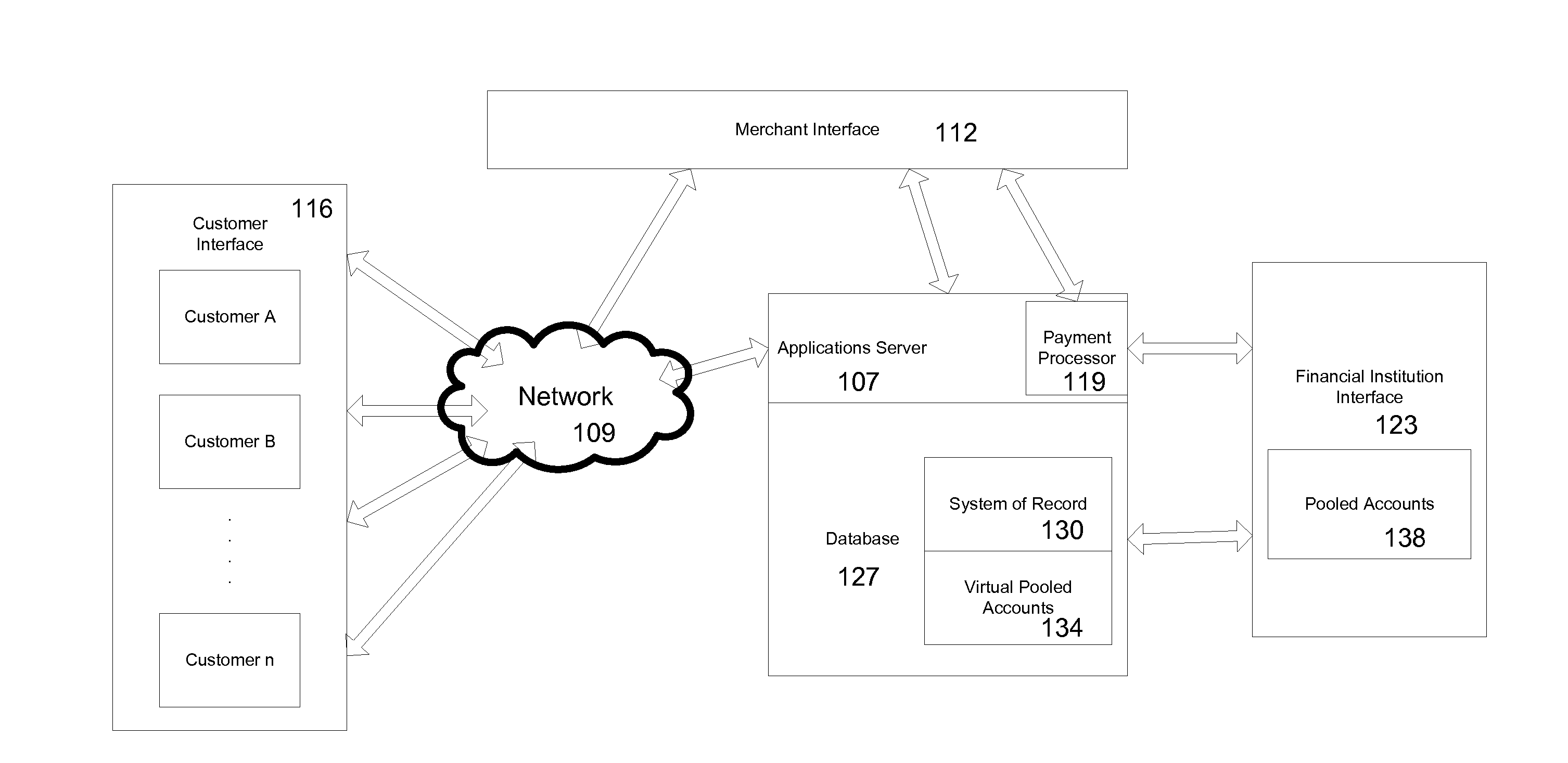Mobile Networked Payment System
a payment system and mobile network technology, applied in the field of mobile networked payment system and financial transaction system, can solve the problems of credit card, debit card and check fraud, significant losses for the payment industry, and all these financial instruments have security problems, and achieve the effect of fast and easy operation
- Summary
- Abstract
- Description
- Claims
- Application Information
AI Technical Summary
Benefits of technology
Problems solved by technology
Method used
Image
Examples
Embodiment Construction
[0061]In this description of embodiments of the present invention, numerous specific details are provided, such as examples of components or methods, or both, to provide a thorough understanding of embodiments of the present invention. One skilled in the relevant art will recognize, however, that an embodiment of the invention can be practiced without one or more of the specific details, or with other apparatus, systems, assemblies, methods, components, parts, or the like, and combinations of these. In other instances, well-known structures, materials, or operations are not specifically shown or described in detail to avoid obscuring aspects of embodiments of the present invention.
[0062]In a specific implementation, the present invention relates to a mobile remittance and payment platform and service. An embodiment of the present invention encompasses a payment platform that provides a fast, easy way to make money transfers and payments by individuals or merchants using their mobile...
PUM
 Login to View More
Login to View More Abstract
Description
Claims
Application Information
 Login to View More
Login to View More - R&D
- Intellectual Property
- Life Sciences
- Materials
- Tech Scout
- Unparalleled Data Quality
- Higher Quality Content
- 60% Fewer Hallucinations
Browse by: Latest US Patents, China's latest patents, Technical Efficacy Thesaurus, Application Domain, Technology Topic, Popular Technical Reports.
© 2025 PatSnap. All rights reserved.Legal|Privacy policy|Modern Slavery Act Transparency Statement|Sitemap|About US| Contact US: help@patsnap.com



